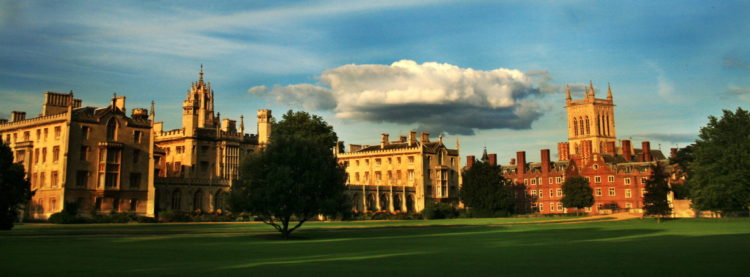By Gavin Mackintosh
State school admissions to Cambridge University for 2017 were the highest level on record, recent UK data shows.
Statistics released by Cambridge university this month revealed that state school pupils made up 64 per cent of successful UK applicants , rising from 62.5 per% the previous year. A writer from the Cambridge University student paper – ‘The Cambridge Student”, told The Eye Of Media.Com that it is the highest percentage on record. The bright writer for the University is also a researcher of various topics and presents talks to students at the University , as well as putting issues forward to the Cambridge University debating society for discussion.
He anonymously told The Eye Of Media.Com that Cambridge University have a system of inclusion that seeks to ensure clever students from less privileged backgrounds are given an opportunity to study there. ” It is always imperative to provide equitable opportunities to clever students from all backgrounds in order to ascertain a parity in the selection process. There will sometimes be bodies who prefer to have students of similar exposure and self esteem levels for the purposes of fostering an atmosphere they consider suitable to their emotional prosperity.
Wide disparities in social development is not something everyone wants, but St Johns generally prefers to give clever students from relatively disadvantaged backgrounds an opportunity to be educated in one of the best Universities in the world”.
FIGURES
Released figures suggest that St John’s College has the lowest acceptances of students from “maintained” schools. Maintained schools is the term the university uses for comprehensive and grammar schools, sixth-form and further education/tertiary colleges. The figure supports the view that Cambridge University is giving opportunities to bright students from state schools who have excelled in both their G.C.S.E’s and A levels. Pupils from private schools are often privileged children who receive the best education in a good private primary school that prepares them for the quality of education awaiting them in a private secondary school.
The extra cash their well to do parents pay, pull in the best teachers who are well paid to produce academically strong pupils. Their pupils tend to do much better than state school pupils. There s still a long list of state schools with very motivated and bright teachers who operate on an ambitious scheme to develop their pupils well academically and mentally, without neglecting their overall well being.
Those schools produce bright pupils who have often in the past been denied the opportunity of getting into the best Universities, the likes of Oxford University, and other University’s believed to be preserved not just for the brightest, but also for those from a certain social class.
RESEARCH
Whilst 48.6 per cent of those accepted to St John’s College were from state schools, Churchill College revealed the highest percentage of 76.5 per cent. The publication will lead to further research to assess whether universities are favouring privileged applicants far more than applicants with similar academic qualifications. Some colleges or universities may only want students of a similar social class to mix to prevent a shock to the system which could come from the class gap between students from different backgrounds. A random mix based on ability and fairness would see students from various backgrounds mix in any educational setting, but there are those who don;t support this idea.
The data also reveals Lucy Cavendish College only had 33 successful applications from state schools, whilst Hughes Hall had 24, and St Edmund’s College had 30 and Wolfson College had 45.
The five colleges with the lowest state school acceptances are St John’s (48.6 per cent), followed by Robinson (48.8 per cent), Caius (52.2 per cent), Magdalene (53.5 per cent) and Peterhouse (54.3 per cent).
.

